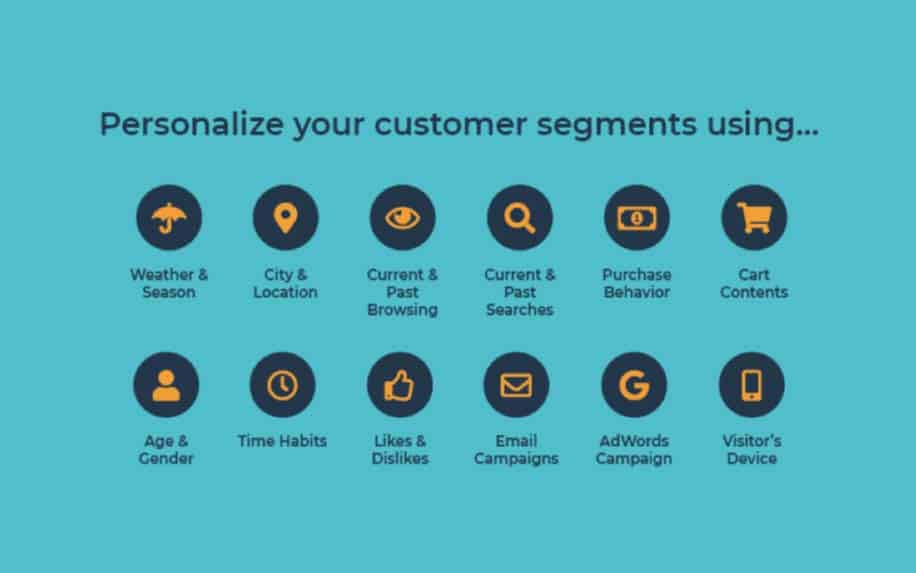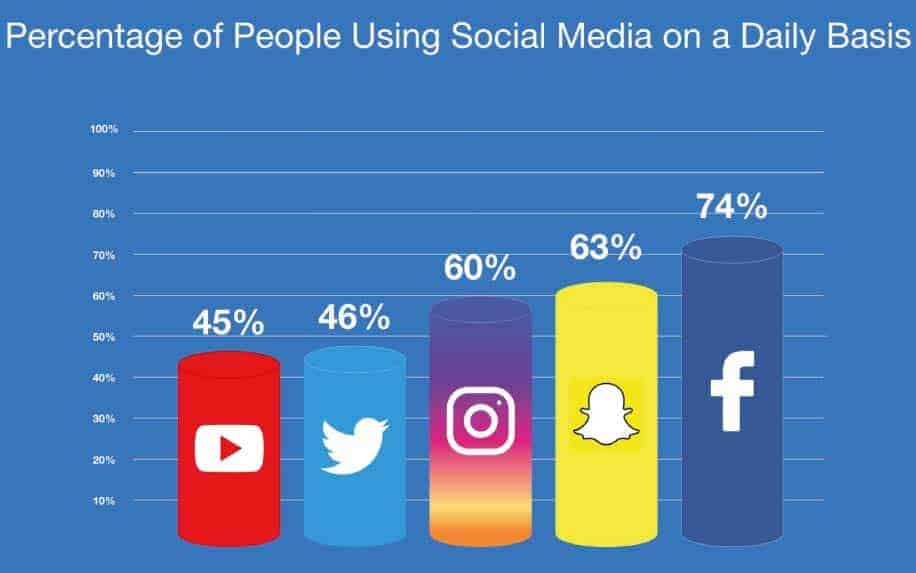
Your business needs a digital marketing plan, whether a small business or a Fortune 100. These days, almost everyone shops online. If your business isn’t digital, you’re going to suffer.
You are missing out if you’re not marketing your business online. Forget that old saying, “If you build it they will come.”
Simply building a website isn’t enough. You must build and execute a strategic digital marketing plan to get your website in front of your target market. In other words, your site needs to deliver actual value for your business.
In this article, we will give you tips on building an effective digital marketing plan. We’ve also created a total guide to SEO, which covers some of this in greater detail.
How to Track a Digital Marketing Plan
Setting goals and measuring specific metrics when executing a digital marketing plan is important. Google Analytics is available for free and will help you track things like:
- Incoming web traffic will show you how many visitors are visiting your website.
- Drop-off rate – What percentage of visitors are landing on a page and leaving, and which pages are most abandoned?
- Goals – Goals that you can set, which will tell you when customers do something desirable, such as making a purchase, requesting a quote, signing up for a newsletter, etc.
Your company should already be tracking sales, but now you will have a deeper understanding of how your website drives profit. You should look over your analytics at least every month to ensure that your website and marketing campaigns are performing well.
Key Components of a Digital Marketing Plan
A comprehensive digital marketing plan includes:
Goals
- Identify 3-5 SMART marketing goals aligned with business objectives. Be specific on targets for traffic, leads, sales, etc.
- Outline quantitative and qualitative goals for brand awareness, positioning, etc.
Audience Targeting
- Define your target customer demographics, interests, and buyer personas in detail.
- Use market research and analytics to analyze your existing audience and market.
- Map out your customer journey across awareness, consideration, and conversion.
Strategies and Tactics
- Outline your planned channels – SEO, PPC, email, social, and content marketing.
- Detail tactics for each channel – keyword targeting, ad messaging, email nurturing tracks.
- Develop specific campaigns to execute strategy – launches, promotions, etc.
Key Performance Indicators
- Determine specific, quantifiable metrics to measure for each goal and campaign.
- Set up tracking in analytics and tag management software.
- Monitor website traffic, leads, conversions, engagement, sales, and more.
Optimizing Your Marketing Plan
- Review your plan regularly and optimize based on performance data.
- Refine campaign elements like messaging, offers, and audience targeting.
- Adapt your plan to accommodate major marketing changes or new opportunities.
Determine Your Target Market for Your Digital Marketing Plan
To build an effective digital marketing plan, you’ll need to focus on your target market. Divide your customers into segments utilizing information pertinent to your company, such as demographics, past purchases, or the industry they’re employed in.
Determine who your best customers are and create personas based on their characteristics. These are representative profiles of your ideal customers, including their:
- Age,
- Sex,
- Location,
- Income,
- Specific issues,
- Interests.

For example, a wedding coordinator would create personas that would represent bride-to-be that fall under different segments, such as low budget limit, medium budget limit, and high budget limit.
This would allow the wedding coordinator to build a digital marketing plan targeting customers that fit those personas.
Keep in mind the life cycle of your customers. If you sell small-ticket items directly to consumers, their life cycle likely runs its course in a short period.
Companies that sell to businesses or big-ticket items would have customers with a longer life cycle, especially because of the longer evaluation phase required for your prospects to purchase.
Understanding the life cycle will allow you to create marketing material that will appeal to your prospects every step on the way.
You can ensure your website is optimized and has essential information so that customers in the discovery and evaluation stage can find what they seek.
Be Everywhere Your Customers Are
For your digital marketing plan to succeed, you must be everywhere your customers are. There are various ways to reach your customers while they’re online. To connect with them, you can do the following:
Paid advertising
The quickest way to reach your target market is through paid advertising, such as Google Adwords, paid social media ads, and more. It is thought that it could be as high as 98% of your website visitors do not purchase their first visit. Retargeting allows you to advertise directly to individuals who have visited your website.
Social Media
Just about everyone has a social media profile. Your digital marketing plan should reflect the channels your target customers use. Whether that is Facebook, Instagram, Twitter, or LinkedIn, your business needs to have an account and be posting regularly.
Keep your prospects informed about your products, the latest news about your company, and even articles, reviews, or videos in which your company or product has been featured. You can also post about the wider industry.
For example, if you’re in the IT industry, you can post about the newest advances in information technology. On the other hand, if you’re in the dental field, you’ll want to post about a new treatment being tested for treating gingivitis.

Search Engine Optimisation
If your website isn’t optimised, it won’t appear on search results, which means prospects looking for services or products you provide won’t find your website.
To ensure your website is search engine optimized, you’ll need to make sure of the following:
- All web pages have a title, meta descriptions, and working links.
- The website is easy to navigate.
- Pages are focused on a specific topic of “keyword” and have the keyword included in the URL, title, and throughout the relevant text.
- All company information, such as locations and phone numbers, is current.
- You are using H1, H2, and H3 tags on each page.
Relevant Influencers
If your target market is split into segments, an influencer is likely already marketing to one or more of those segments.
You can launch marketing campaigns where you collaborate or cross-market with influencers already targeting your desired audience.
Email Marketing
Email marketing is the best way to nurture leads that come to your website. By offering prospects a chance to register for your newsletter, a discount for signing up for an email list, or having them sign up for a webinar or ebook, you’ll be able to get their email address.
You can also create a newsletter and have it go out automatically in intervals to keep prospects interested. This is especially important if you sell high-value items since users are unlikely to purchase their first visit to your site.
How to Create a Digital Marketing Plan
The main rules to follow when creating or updating your website are:
1. Provide a Strong UX
Your customers don’t want to dig through 20 pages on your website to find what they want. Make it easy for them to find what they are looking for and even easier to buy it!
Keep most of the information “above the fold” (what the website visitor sees on that page without scrolling down), and don’t overload the page with useless and unimportant information.
Ensure your menu is easy to use and include a call-to-action to get the prospect’s attention.
2. Create Effective Content
The content on your website needs to be original and high quality. If your page title is not relevant to the topic of the content on that page, search engines, especially Google, will push your content into the abyss, also known as anything past the first page.
If you run an e-commerce site, you must include photos and videos of your products for your prospects. Luckily, photos and videos also get detected by search engines and help you move up in page rank.
3. Encourage Visitors to Convert
Whether you encourage visitors to “Buy it now!”, “Order Today!” or “Request a Free Quote”, it’s important that you include that call-to-action.
Including a call-to-action can help increase conversions on your website, which in turn helps increase overall sales and profit for your company.
4. Take Advantage of Marketing Platforms
Various useful platforms can help you fine-tune your marketing strategy. For example, many marketing platforms allow you to schedule social media posts.
Various CRM tools can link to your website and collect prospect and customer information, which you can use to nurture leads and close sales.
Moz tracks each of your keywords and web pages and suggests how you can better optimize that page to move up in positions. There are many other platforms, and you must find the one right for your business.
Consider Hiring a Professional
Digital marketing is never effective if you just wing it. Instead, you must have an expert to create your digital marketing plan. If you don’t know, it’s best to hire someone who does.
Many companies decide to either hire an employee who specializes in marketing, a marketing consultant or outsource their marketing to an agency.
Those companies understand the importance of investing in digital marketing, especially in today’s world, where many stores are closing, but online sales are soaring. If you do consider hiring someone or a company, make sure you do your research.
Find a person or company that is experienced in your industry and can help build a digital marketing strategy from the ground up. While picking the right marketing consultant can be tricky, the results make it worthwhile. You should assess the credentials of prospects in detail and get examples of what the expert intends to offer in terms of elements like audience research and sales integration. Don’t be shy about requesting info on past projects they’ve worked on and evidence of successful marketing strategy implementation they have to prove their claims. You want to be certain that hiring a professional is money well spent.
Digital Marketing Plan Template
Use this template as a framework when creating your plan:
- Executive Summary: Brief overview of key goals and summary of the plan.
- Goals List 3-5 specific marketing goals aligned to business objectives.
- Target Audience: Define target demographics, interests, behaviours, and buyer personas.
- Current Marketing Overview Summarize existing marketing channels and high-level performance.
- Strategies and Tactics Detail approaches for each channel, like SEO, PPC, social media, and email.
- Campaigns Outline specific campaigns and promos to execute the strategy.
- Timelines Provide timeframes and schedules for campaigns in a calendar.
- Budget Summarize budget resources and allocation across channels.
- KPIs and Metrics List key performance indicators used to track progress.
- Monitoring and Optimization Plan Discuss processes to review and optimize the plan regularly.
Digital Marketing Plan FAQs
Q: How often should you update your marketing plan?
A: Review it quarterly and optimize it as needed. Do a thorough annual revision.
Q: What should a marketing plan cost?
A: Depending on business size, $5,000-$50,000 annually is typical for comprehensive digital plans.
Q: Is website traffic a key goal?
A: Yes, increasing relevant organic and paid website traffic is often a core objective.
Q: What is the best marketing plan software?
A: SEMrush, HubSpot, and Moz offer useful marketing plan features.
Digital Marketing Plan Conclusion
Creating a documented digital marketing plan following an optimized framework allows businesses to align efforts to specific growth goals. By outlining strategies backed by data-driven targeting, companies can pursue a more cohesive, effective approach across all digital activities. With regular optimization and adaptation, a strong marketing plan will evolve and scale with an organization over time.
The post How to Build an Effective Digital Marketing Plan – 4 Essential Tips appeared first on ProfileTree.

Leave a Reply